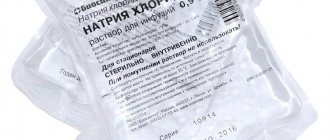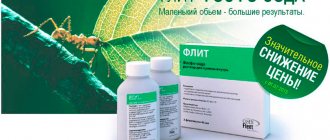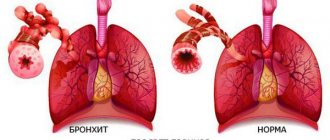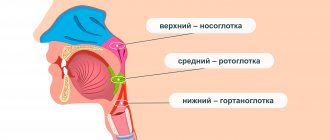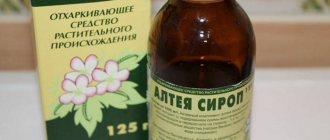Compound
paracetamol as an active ingredient , as well as additional components: anhydrous citric acid, sodium bicarbonate, anhydrous sodium carbonate, povidone , sodium docusate, sodium saccharinate, sodium benzoate.
Efferalgan syrup contains the active ingredient paracetamol, as well as additional components: sugar syrup, macrogol 6000 , citric acid, sodium saccharinate, flavoring, purified water.
Efferalgan suppositories contain the active substance paracetamol, as well as semi-synthetic glycerides as additional components.
Release form
- Effervescent tablets are white, round, flat in shape, with beveled edges and a line on one side. As the tablet dissolves in water, gas bubbles are actively released. Contained in strips of 4 pcs.
- Children's Efferalgan is produced in the form of syrup - a viscous solution, yellow-brown in color, with a caramel-vanilla aroma. Packaged in 90 ml bottles, a bottle and a measuring spoon are placed in a cardboard box.
- Rectal suppositories are white, glossy, smooth, contained in blisters of 10 pieces.
Composition and release form
Efferalgan
| Syrup for children | 100 ml |
| paracetamol | 3 g |
| excipients: macrogol 6000; sugar syrup (sucrose, water); sodium saccharinate; potassium sorbate; lemon acid; caramel-vanilla flavoring*; purified water | |
| *flavor composition: butanedione; acetylmethylcarbinol; benzaldehyde; propylene glycol; gamma-heptalactone; benzyl alcohol; triacetin; piperonal; amyl cinnamate; vanillin; acetylvanillin |
in polyethylene phthalate bottles of 90 ml (complete with measuring spoon); 1 bottle in a cardboard pack.
| Suppositories for rectal use | 1 sup. |
| paracetamol | 80 mg |
| 150 mg | |
| 300 mg | |
| excipients: semi-synthetic glycerides - up to a weight of 1 g |
in contour cell packages 5 pcs.; in a cardboard pack 2 packs.
| Effervescent tablets | 1 table |
| paracetamol | 0.5 g |
| excipients: anhydrous citric acid; sodium carbonate anhydrous; sodium bicarbonate; sorbitol; soluble saccharin; sodium docusate; povidone; sodium benzoate |
in strips of 4 pcs.; There are 4 or 25 strips in a box.
Efferalgan with vitamin C
| Effervescent tablets | 1 table |
| paracetamol | 330 mg |
| ascorbic acid | 200 mg |
| excipients: potassium bicarbonate; sodium bicarbonate; sorbitol; anhydrous citric acid; sodium benzoate; sodium docusate; povidone |
in tubes of 10 pcs., in a box 1 tube.
pharmachologic effect
Efferalgan UPSA has an antipyretic, analgesic, and mild anti-inflammatory effect on the body. Its mechanism of action is associated with the process of inhibition of prostaglandin synthesis. It has a predominant effect on the thermoregulation center in the hypothalamus .
Cellular peroxidases neutralize the effect of paracetamol on COX in inflamed tissues, as a result, the anti-inflammatory effect is very weak.
There was no negative effect on the processes of water-salt metabolism, as well as on the condition of the mucous membrane of the digestive tract due to the lack of impact on the synthesis of prostaglandins in peripheral tissues.
Pharmacodynamics
Efferalgan, syrup, suppositories, tablets
Efferalgan contains paracetamol, which blocks COX-1 and -2 mainly in the central nervous system, affecting the centers of pain and thermoregulation. In inflamed tissues, cellular peroxidases neutralize the effect of paracetamol on COX, which explains the almost complete absence of anti-inflammatory effect. The absence of a blocking effect on the synthesis of PG in peripheral tissues determines the absence of a negative effect on water-salt metabolism (retention of Na+ and water) and the mucous membrane of the gastrointestinal tract.
Suppositories have analgesic, antipyretic and weak anti-inflammatory effects.
Additionally for tablets: the possibility of methemoglobin formation is unlikely.
Efferalgan with vitamin C
Efferalgan with vitamin C is a combination drug that contains paracetamol and, therefore, has an analgesic and antipyretic effect. Ascorbic acid, which is part of Efferalgan with vitamin C, takes part in the regulation of redox processes, reduces vascular permeability and increases the body's resistance to infections.
Pharmacokinetics and pharmacodynamics
After Efferalgan has been taken orally, paracetamol is rapidly absorbed from the gastrointestinal tract, mainly in the small intestine by passive transport. After taking a single dose of 500 mg, the highest concentration in the blood plasma is observed after 10-60 minutes. It is well distributed in tissues and fluids, with the exception of cerebrospinal fluid and adipose tissue. It binds to proteins by less than 10%; with an overdose, this binding increases slightly.
Metabolism occurs mainly in the liver. The half-life is 1-3 hours. In patients with liver cirrhosis, the half-life increases. Renal clearance is 5%. It is mainly excreted through the kidneys in the form of glucuronide and sulfate conjugates. Less than 5% is excreted unchanged.
Pharmacokinetics
Absorption of paracetamol is complete and rapid. Peak plasma concentrations are reached 30–60 minutes after administration. The distribution of paracetamol in tissues occurs quickly. Comparable drug concentrations are achieved in blood, saliva and plasma. Plasma protein binding is low, 10–25%. Penetrates through the BBB.
Metabolism occurs in the liver, 80% enters into conjugation reactions with glucuronic acid and sulfates to form inactive metabolites; 17% undergoes hydroxylation to form 8 active metabolites, which conjugate with glutathione to form inactive metabolites. With a lack of glutathione, these metabolites can block the enzyme systems of hepatocytes and cause their necrosis. The CYP2E1 isoenzyme is also involved in the metabolism of the drug. T1/2 - 1-4 hours. Excreted by the kidneys in the form of metabolites, mainly conjugates. Less than 5% is excreted unchanged.
Indications for use
Effervescent tablets are used for moderate or mild pain:
- for headaches and toothaches;
- for migraines ;
- in case of pain in the lower back and muscles;
- for pain due to burns, injuries;
- with algodismenorrhea ;
- in case of elevated body temperature due to colds and other infectious and inflammatory diseases.
Efferalgan syrup is intended for the treatment of children aged 1 month to 12 years (respectively, weighing from 4 kg to 32 kg). Used in such cases:
- as an antipyretic drug for colds, acute respiratory infections , flu , infectious diseases, reactions after vaccine administration and other conditions in which there is an increase in body temperature;
- as an anesthetic drug for mild or moderate pain (headache, toothache, neuralgia , muscle pain, pain from burns, injuries).
Suppositories are used for pain syndromes of various origins, subject to mild and moderate pain, as well as for fever in patients with infectious and inflammatory diseases.
Indications for the drug Efferalgan
Efferalgan
Syrup - for children from 1 month to 12 years (with a body weight of 4–32 kg); suppositories 80 mg - for children from 3 months to 5 months (with body weight from 6-8 kg); suppositories 150 mg - for children 6 months to 3 years old (with a body weight of 10–14 kg); suppositories 300 mg - for children 5–10 years old (with a body weight of 20–30 kg) for the following diseases and conditions:
as an antipyretic for acute respiratory diseases, influenza, childhood infections, post-vaccination reactions and other infectious and inflammatory diseases accompanied by an increase in body temperature;
as an analgesic for pain of mild or moderate intensity (including headaches, toothaches, muscle pain, neuralgia, pain from injuries and burns).
Efferalgan
Efferalgan with vitamin C
moderate or mild pain syndrome (headache, toothache, migraine pain, neuralgia, muscle pain, lower back pain, pain from injuries and burns, sore throat, painful menstruation);
elevated body temperature due to colds (acute respiratory infections, flu, etc.) and other infectious and inflammatory diseases.
Contraindications
Efferalgan tablets are contraindicated for use in the following cases:
- for chronic alcoholism ;
- people with glucose-6-phosphate dehydrogenase ;
- in the first and third trimester of pregnancy, as well as during lactation;
- when the patient is under 15 years of age 9, provided that the person’s body weight is less than 50 kg);
- high sensitivity to the components of the product.
This drug is used with caution to treat patients with renal or liver failure, congenital hyperbilirubinemia , alcoholic liver damage, and viral hepatitis. You also need to be careful when treating elderly people.
Efferalgan syrup and suppositories are not used:
- for a child under 1 month of age;
- with high sensitivity to the components of the product;
- with liver and kidney failure;
- in case of blood diseases;
- with a lack of glucose-6-phosphate dehydrogenase .
The syrup is prescribed with caution to patients with diabetes mellitus . Suppositories are not used for children suffering from diarrhea .
Side effects
When treated with this drug, some side effects may develop:
- manifestations of allergies: itching, skin rash, Quincke's edema ;
- hematopoiesis: thrombocytopenia , anemia , methemoglobinemia - in rare cases;
- digestive system: diarrhea , nausea, abdominal pain, vomiting; when used for a long time, a hepatotoxic effect may develop;
- other manifestations: impaired renal and liver function - in case of prolonged use of large doses of the drug.
In the doses indicated in the instructions, it is usually well tolerated.
Instructions for use of Efferalgan (Method and dosage)
Efferalgan effervescent tablets, instructions for use
Tablets should be taken orally, after dissolving one tablet in 200 ml. water. Take, according to the instructions, 1-2 tablets two to three times a day, with an interval of at least four hours. The permissible dose per day is 8 tablets of Efferalgan UPSA.
People with impaired renal or liver function, as well as elderly patients, need to reduce the daily dose of the drug, increasing the interval between taking tablets to 8 hours. You can take the medicine for five days, provided that the tablets are used as an anesthetic, and for three days as an antipyretic.
Instructions for syrup for children Efferalgan
When using Efferalgan syrup for children, parents must follow the instructions for use very carefully. When determining a single dose of the drug, you need to take into account the child’s body weight: the average dose is determined at the rate of 10-15 mg per 1 kg of the child’s weight 3-4 times a day, while the highest daily dose should be no more than 60 mg per 1 kg of the child’s weight.
An interval of 4-6 hours should be maintained between doses. It is most convenient to determine the required dose using the measuring spoon that comes with the medicine bottle. If a child is diagnosed with impaired renal function, the interval between doses should be increased to 8 hours.
You can use the syrup either undiluted or diluted with liquid milk, juice, etc.
The product can be used for three days to reduce body temperature and for 5 days as an analgesic. If you need to continue the duration of treatment, it is important to consult your doctor.
Instructions for candles
The instructions for Efferalgan suppositories for children provide for rectal use of suppositories. Suppositories of 150 mg and 80 mg are used. Adults and adolescents whose weight is more than 60 kg are prescribed a single dose of 500 mg; the drug can be taken no more than 4 times a day. You can use candles regularly for 5-7 days. The maximum daily dose is no more than 4 g of the product.
Children from 6 to 12 years old need to use a single dose of 250-500 mg, children from 1 to 5 years old - 120-250 mg, children from 3 months to 1 year - 60-120 mg. Children under 3 months should use baby suppositories at the rate of 10 mg per 1 kg of child weight. Suppositories can be used no more than 4 times per day, treatment can last no more than 3 days.
Overdose
In case of an overdose of the drug, the patient may experience nausea and vomiting, pale skin, anorexia, and hepatonecrosis. If an adult takes a dose of paracetamol more than 10-15 g, its toxic effect may occur. In particular, the activity of liver transaminases increases and prothrombin time increases. After 1-6 days, liver damage may appear. In rare cases, in case of overdose, fulminant development of liver failure has been observed, in which renal failure may develop as a complication.
In case of overdose, gastric lavage should be performed in the first six hours. After this, 8-9 hours after the overdose, donors of SH groups and precursors of glutathione synthesis - methionine, should be administered, and after 12 hours - N-acetylcysteine.
Further actions are determined by the level of paracetamol in the blood and how long after taking it.
Efferalgan effervescent tablets 500 mg No. 16
A country
France
The country of production may vary depending on the batch of goods. Please check with the operator for detailed information when confirming your order.
Active substance
Paracetamol + Phenylephrine + Ascorbic acid
Compound
1 tablet contains: paracetamol 500 mg. Excipients: anhydrous citric acid - 1114.00 mg, sodium bicarbonate - 942.00 mg, anhydrous sodium carbonate - 332.00 mg, sorbitol - 300.00 mg, sodium saccharinate - 7.00 mg, sodium docusate - 0.227 mg, povidone - 1.287 mg, sodium benzoate - 60.606 mg. Effervescent tablets are white, round, flat, with beveled edges and a score line on one side. When dissolved in water, intense release of gas bubbles is observed.
pharmachologic effect
Analgesic-antipyretic. Has an analgesic and antipyretic effect. Inhibits COX-1 and COX-2 mainly in the central nervous system, affecting the centers of pain and thermoregulation. In inflamed tissues, cellular peroxidases neutralize the effect of paracetamol on COX, which explains the almost complete absence of its anti-inflammatory effect. It does not have a negative effect on water-salt metabolism (sodium and water retention) and the gastrointestinal mucosa due to the lack of influence on the synthesis of prostaglandins in peripheral tissues. The possibility of methemoglobin formation is unlikely.
Indications for use
- pain syndrome of mild or moderate intensity: headache, toothache, migraine, neuralgia, muscle pain, lower back pain, pain from injuries and burns, sore throat, algodismenorrhea; - increased body temperature with colds and other infectious and inflammatory diseases .
Mode of application
The tablet should be dissolved in a glass of water (200 ml) and drunk. Prescribed orally 0.5-1 g (1-2 tablets) 2-3 times a day at intervals of at least 4 hours. The maximum single dose is 1 g (2 tablets), the daily dose is 4 g (8 tablets). patients with impaired liver or kidney function and elderly patients, the daily dose should be reduced, the interval between doses of the drug should be at least 8 hours. The duration of treatment (without consulting a doctor) is no more than 5 days when used as an analgesic and 3 days - as an antipyretic.
Interaction
Inducers of microsomal oxidation in the liver (phenytoin, ethanol, barbiturates, rifampicin, phenylbutazone, tricyclic antidepressants) increase the production of hydroxylated active metabolites of paracetamol, which makes it possible to develop severe intoxication with a small overdose of the drug. Inhibitors of microsomal oxidation (including cimetidine) reduce the risk hepatotoxic effect of paracetamol. Paracetamol reduces the effectiveness of uricosuric drugs. When used simultaneously with paracetamol, ethanol promotes the development of acute pancreatitis.
Side effect
Allergic reactions: sometimes - skin rash, itching, Quincke's edema. From the hematopoietic system: rarely - anemia, thrombocytopenia, methemoglobinemia. Others: with long-term use in doses significantly higher than recommended, the likelihood of impaired liver and kidney function increases (monitoring of the peripheral picture is necessary blood). The drug is well tolerated in recommended doses.
Contraindications
- chronic alcoholism; - deficiency of glucose-6-phosphate dehydrogenase; - I and III trimesters of pregnancy; - lactation period (breastfeeding); - children under 15 years of age (body weight less than 50 kg); - hypersensitivity to the components of the drug. With caution the drug should be used for renal and/or liver failure, congenital hyperbilirubinemia (Gilbert, Dubin-Johnson and Rotor syndromes), viral hepatitis, alcoholic liver damage, and in elderly patients.
Overdose
Symptoms: — pallor of the skin, anorexia, nausea, vomiting; — hepatonecrosis (the severity of necrosis due to intoxication directly depends on the degree of overdose). Toxic effects in adults are possible after taking paracetamol in a dose of more than 10-15 g: increased activity of liver transaminases, increased prothrombin time (12-48 hours after administration); - a detailed clinical picture of liver damage appears after 1-6 days. Rarely - fulminant development of liver failure, which can be complicated by renal failure (tubular necrosis). Treatment: in the first 6 hours after an overdose - gastric lavage, administration of SH-group donors and precursors for the synthesis of glutathione - methionine 8-9 hours after the overdose and N- acetylcysteine after 12 hours. The need for additional therapeutic measures (further administration of methionine, intravenous administration of N-acetylcysteine) is determined by the concentration of paracetamol in the blood, as well as the time elapsed after its administration.
special instructions
If the febrile syndrome continues during the use of paracetamol for more than 3 days, and pain syndrome for more than 5 days, a doctor’s consultation is required. Distorts laboratory test results when quantifying the content of uric acid in plasma. To avoid toxic damage to the liver, paracetamol should not be combined with alcoholic beverages , and also taken by people prone to chronic alcohol consumption. The risk of developing liver damage increases in patients with alcoholic hepatosis. With prolonged use of the drug, monitoring of the peripheral blood picture and the functional state of the liver is necessary. Efferalgan contains 412.4 mg of sodium in 1 tablet, which should be taken into account by patients on a strict low-salt diet. The tablets contain sorbitol, so the drug should not be used in case of fructose intolerance, low absorption of glucose and galactose, or isomaltase deficiency.
Storage conditions
Room temperature
Interaction
The production of hydroxylated active metabolites of paracetamol increases with simultaneous administration of inducers of microsomal oxidation in the liver ( ethanol , phenytoin , barbiturates , phenylbutazone , Rifampicin , tricyclic antidepressants), as a result, severe intoxication may develop.
pancreatitis may develop .
The simultaneous use of microsomal oxidation inhibitors reduces the likelihood of hepatotoxic effects of paracetamol.
The effect of uricosuric drugs is reduced when taking paracetamol.
Taking paracetamol simultaneously with salicylates significantly increases the likelihood of nephrotoxicity.
The half-life of paracetamol is increased when salicylamide .
When taken simultaneously with chloramphenicol, the toxicity of the latter increases.
Taking probenecid almost halves the clearance of paracetamol due to suppression of binding to glucuronic acid.
The effect of indirect anticoagulants is enhanced when taking paracetamol.
The absorption of paracetamol may be reduced when taking anticholinergic drugs simultaneously.
If paracetamol is taken simultaneously with the use of oral contraception, the process of removing paracetamol from the body is accelerated and its analgesic effect is reduced.
Taking activated carbon reduces the bioavailability of paracetamol.
Taking paracetamol and diazepam leads to a decrease in diazepam .
With simultaneous use, the myelosuppressive effect of zidovudine . There is evidence of severe toxic liver damage with this combination. There is also information about toxic liver damage when taking paracetamol and isoniazid .
There are data on cases of hepatoxicity with the simultaneous use of paracetamol and Phenobarbital .
When used simultaneously with metoclopramide, the absorption of paracetamol may be increased and its concentration in the blood may increase.
Absorption of paracetamol from the intestine is increased when taken simultaneously with ethinyl estradiol .
If the patient takes the drug cholestyramine for less than 1 hour after taking paracetamol, the absorption of the latter may be reduced.
When used simultaneously with lamotrigine, the elimination of the latter from the body may increase.
special instructions
If, while taking Efferalgan, pain continues to bother you for more than 5 days, and fever for more than 3 days, you need to consult a specialist.
When determining the content of uric acid in blood plasma, the results of laboratory tests may be distorted.
To prevent toxic effects, people who regularly drink alcohol should not take paracetamol. The likelihood of liver damage increases in people with alcoholic liver disease.
If the medication is taken for a long time, it is important to monitor the condition of the liver and peripheral blood picture.
Efferalgan tablets contain 412.4 mg of sodium (in 1 tablet), this should be taken into account by people following a strict low-salt diet . Also, the tablets should not be taken by patients with low absorption of glucose and galactose, fructose intolerance, or isomaltase deficiency, since they contain sorbitol .
Efferalgan should not be taken simultaneously with other medications that contain paracetamol. In order not to exceed the daily dose.
Parents or caregivers should be aware of the need to discontinue the medication and contact a doctor if side effects occur.
Efferalgan syrup for children 30mg/ml 90ml bottle in Moscow
The average single dose depends on the child’s body weight and is 10-15 mg/kg body weight 3-4 times a day. The maximum daily dose should not exceed 60 mg/kg body weight. The interval between doses of the drug should be 4-6 hours. You should adhere to regular time intervals between taking the drug.
For convenience and accuracy of dosing, you should use a measuring spoon. The measuring spoon has divisions indicating the child’s body weight: 4, 6, 8, 10, 12, 14 or 16 kg. Unmarked divisions correspond to intermediate body weight: 5, 7, 9, 11, 13 or 15 kg.
Children weighing from 4 to 16 kg
Fill the measuring spoon to the mark corresponding to the child's body weight, or to the mark that is closest in value to the child's body weight. For example, if the child's body weight is from 4 to 5 kg, fill the measuring spoon to the 4 kg mark. If necessary, the drug should be taken every 4-6 hours.
Children weighing from 16 to 32 kg
Fill the measuring spoon to the 10 kg mark, then refill the measuring spoon to the mark so that the total weight of the child is obtained. For example, if your child weighs between 18 and 19 kg, fill the measuring spoon to the 10 kg mark, then refill the measuring spoon to the 8 kg mark. If necessary, the drug should be taken every 4-6 hours.
In case of impaired renal function (creatinine clearance less than 10 ml/min)
the time interval between doses of the drug should be at least 8 hours.
The drug can be given to a child either without dilution or after dilution (with water, milk or juice).
The duration of treatment is 3 days as an antipyretic and up to 5 days as an analgesic. If it is necessary to continue taking the drug, consult a doctor.
To avoid exceeding the maximum daily dose, Efferalgan should not be used simultaneously with other drugs containing paracetamol.
When using the drug for more than 5-7 days, it is necessary to monitor the peripheral blood picture and the functional state of the liver.
Paracetamol distorts the results of laboratory tests of glucose and uric acid in blood plasma.
If it is necessary to prescribe the drug to patients with diabetes mellitus or to patients on a low-sugar diet, it should be taken into account that 1 ml of the drug contains 0.335 g of sugar (0.67 g of sugar for each calibration division of the measuring spoon /indicated by marks in kg/).
Persons caring for a sick child should be warned about the need to discontinue the drug and consult a doctor if adverse reactions occur. Consultation with a doctor is also required in the absence of a therapeutic effect: continuation of fever for more than 3 days and pain for more than 5 days.
Analogs
Level 4 ATC code matches:
Phenacetin
Combiflu
Chlorphenamine
Coldflu
Calpol
Fervex
Panadol Extra
Panadol for children
Panadol
Solpadeine
Milistan
Coldrex Maxgripp
Coldrex Hotrem
Coldrex
AntiGrippin
Unispaz
Pentalgin Plus
Rapidol
Maxicold
Perfalgan
Analogs of this medicine are products containing paracetamol as an active ingredient. These medications are Sanidol , Panadol , Strimol , Paracetamol , Prohodol , Tylenol , etc. A doctor should select the most appropriate medicine for children and adults.
Reviews
Leaving reviews about children's Efferalgan, parents write that the drug very quickly normalizes body temperature during colds and other diseases. Users note the ease of use of the syrup, which comes with a measuring spoon, as well as suppositories that are easy to administer rectally. The syrup has a pleasant taste, which makes it easy to use for very young children.
Suppositories for children are no less effective and are often used if the child refuses to take the medicine orally. Effervescent tablets, according to reviews, are an effective pain reliever for adults, and they also quickly relieve symptoms of fever.
Efferalgan price, where to buy
Effervescent tablets can be purchased at a price of 170 rubles. for 16 pcs. Children's Efferalgan - syrup for children costs from 110 rubles. per pack 90 ml. Candles for children can be purchased at a price of 150 rubles. for 10 pcs. The price of suppositories depends on the packaging and content of the active substance.
- Online pharmacies in RussiaRussia
- Online pharmacies in UkraineUkraine
- Online pharmacies in KazakhstanKazakhstan
ZdravCity
- Efferalgan tablets spike.
500 mg 16 pcs. Bristol-Myers Squibb/UPSA SAS RUB 160 order
Pharmacy Dialogue
- Efferalgan effervescent tablets 500 mg No. 16Bristol Myers
146 RUR order
- Efferalgan syrup 3% for children 90mlUPSA SAS
89 rub. order
- Efferalgan suppositories 300 mg No. 12Bristol Myers
101 rub. order
show more
Pharmacy24
- Efferalgan 500 mg No. 16 effervescent tablets UPSA SAS, France
88 UAH. order - Efferalgan with vitamin C No. 10 effervescent tablets UPSA SAS, France
78 UAH order
- Efferalgan 150 mg No. 10 suppositories UPSA SAS, France
81 UAH order
- Efferalgan 80 mg No. 10 suppositories UPSA SAS, France
81 UAH order
- Efferalgan 3% 90 ml No. 1 solution UPSA SAS, France
102 UAH order
PaniPharmacy
- Efferalgan with vit. C tablets Efferalgan with vit. From the table thorn. No. 10 France, UPSA
86 UAH order
- Efferalgan tablets Efferalgan tablets. thorn. 500 mg No. 16 France, UPSA
86 UAH order
- Efferalgan liquid Efferalgan solution 150mg/5ml 90ml France, UPSA
107 UAH order
- Efferalgan suppository Supp. efferalgan rectal. 80 mg No. 10 France, UPSA
84 UAH order
- Efferalgan suppository Supp. efferalgan rectal. 150 mg No. 10 France, UPSA
85 UAH order
show more
Description of the dosage form
Efferalgan
Syrup: a slightly viscous solution of yellow-brown color with a caramel-vanilla aroma.
Suppositories: smooth, glossy white suppositories.
Tablets: round, flat with beveled edges and a notch on one side, white. When dissolved in water, intense release of gas bubbles is observed.
Efferalgan with vitamin C
Tablets: flat, white, with beveled edges and notches, when dissolved in water they give an effervescent reaction.
